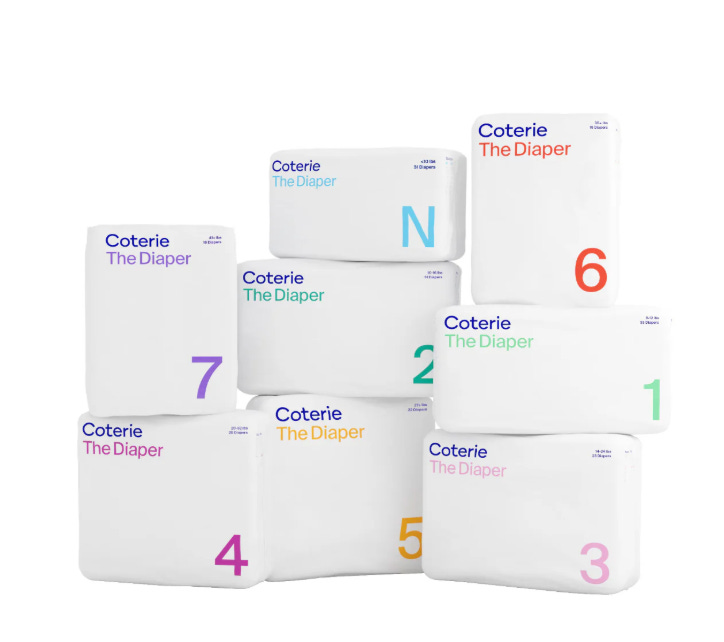Before we dive in, let me just say: we’re not really going to discuss cloth diapers here.
Yes, they are the most sustainable, the most cost-effective, and the most responsible choice. They create virtually no landfill waste, cost less in the long run, and contain zero hidden chemicals. If you want to be an A+ parent and an environmental saint, go for it.
This guide is for parents trying to find the best disposable diapers—the ones that balance safety, performance, and sustainability without requiring a second washing machine and/or housekeeper….
Finding Sustainable Diapers: Surprisingly Hard?
Somewhere between the seventh diaper explosion in a week and my fourth Reddit deep dive, I realized that modern diaper shopping is oddly fraught.
There’s the Big Brand Behemoths, proudly advertising “clean” versions while still sneaking in fragrances and petrochemicals. Then there’s the Boutique Eco-Warriors, whose plant-based claims sound great until you realize that unless you own an industrial waste facility, those diapers are heading straight to a landfill like all the rest.
I wanted clarity. So did David.
So, we did what technologists, experimenters, and tinkerers at heart would do: we tested every diaper on our own 12-month-old babies.
We analyzed absorbency, ingredient safety, and comfort while digging into the fine print of sustainability claims. We took a Wirecutter-style approach— with a lot of data, some AI-powered research, and more diaper changes than I care to count.
Best Overall: Healthy Baby
Score: 90/100
Who it’s for: Parents who want a non-toxic, high-performing disposable diaper without falling for misleading marketing.
What we like about it: Healthy Baby is the only disposable diaper verified by the Environmental Working Group (EWG), which means it meets one of the strictest safety standards for personal care products. It’s hypoallergenic, free from chlorine, phthalates, fragrance, and VOCs, and performs exceptionally well in absorbency and leak prevention. We had zero leaks with this diaper, including overnight. Not only do they have the most certifications, they also are the most transparent to end consumers about their ingredients.
What we don’t like:
They’re more expensive than mainstream brands and only available via subscription or select online retailers.
While they win in performance and transparency, they still contain 100% plant-based and non-plant-based polyethylene in their outer layer, and 40% in their core. While this has been deemed safe for babies, we know that even plant-based plastics are not as green as they seem, and often end up in landfills.
Most Sustainable Option: Dyper
Score: 85/100
Who it’s for: Parents who want a disposable diaper with the lowest possible environmental impact.
What we like about it: Dyper is one of the only brands with an actual composting program, meaning the diapers won’t sit in landfills for centuries like traditional disposables. They’re made from bamboo viscose, free from chlorine, phthalates, and fragrances, and soft but highly absorbent.
What we don’t like: While Dyper markets itself as an eco-friendly option, bamboo viscose production is not nearly as “green” as it sounds. Its chemical-intensive processing raises environmental concerns. Also, if you don’t actively compost them through Dyper’s REDYPER program, they’re just regular diapers sitting in a landfill.
Best Performance: Coterie
Score: 80/100
Who it’s for: Parents who want a high-performance diaper that keeps their baby dry longer, especially overnight or during long outings.
What we like about it: Coterie is consistently the most absorbent and leak-proof diaper we tested. It’s soft, snug, and does an impressive job wicking away moisture quickly—our babies stayed noticeably drier in Coterie than in any other brand. It’s also free from chlorine, fragrance, and dyes, which gives it a solid score on the safety front.
Our Issues with it: While the marketing leans into a “clean” aesthetic, Coterie isn’t compostable, biodegradable, or third-party certified for sustainability. It also uses bamboo viscose, which has a more complex environmental impact than it sounds. And at nearly double the price of most mainstream diapers, it’s not the most budget-friendly option.
Best Budget Option: Honest Company
Score: 75/100
Who it’s for: Parents who want a more natural diaper option without the ultra premium price tag of boutique eco offerings.
What we like about it: Honest diapers steer clear of chlorine, latex, parabens, and artificial fragrances. They perform reliably for daytime use and are one of the few non-toxic options that you can grab during a regular grocery run. Subscription bundles also make them more cost-effective.
Our Issues with it: They’re not ideal for overnights or particularly heavy wetters — leaks can happen, especially in larger sizes or longer wear. We also found that the diaper tabs are sometimes prone to tearing. And while Honest makes a genuine effort toward better-for-baby materials, these diapers aren’t compostable or plastic-free, and their sustainability messaging can feel a little greenwash-y.
Bottom line: when it comes to diapers, if you are looking for something plastic-free or sustainable, everything is flawed.
So go cloth, or make the best choice for you and your family! I, for one, have settled on Healthy Baby. More details on rankings and how we picked and tested below.
More info on what we tested, and how, below.
We’ll keep updating this guide as new brands improve their offerings. If there’s a diaper you love (or hate), let us know.
Subscribe to Conscious Cart for no-nonsense breakdowns of the products you use every day.
How We Picked & Tested
A great diaper needs to balance:
Non-toxic materials – Free from chlorine, phthalates, artificial fragrance, and other harmful chemicals. As limited use of petrochemicals as possible, ideally none.
Absorbency & performance – Can they keep a baby dry overnight? Do they prevent leaks?
Sustainability – Are they biodegradable or compostable? Do they reduce environmental impact?
Brand ethics & transparency – Are they honest about their materials and sourcing?
Marketing vs. Reality – Are their eco-friendly claims actually true?
Cost & availability – Are they easy to buy and reasonably priced?








